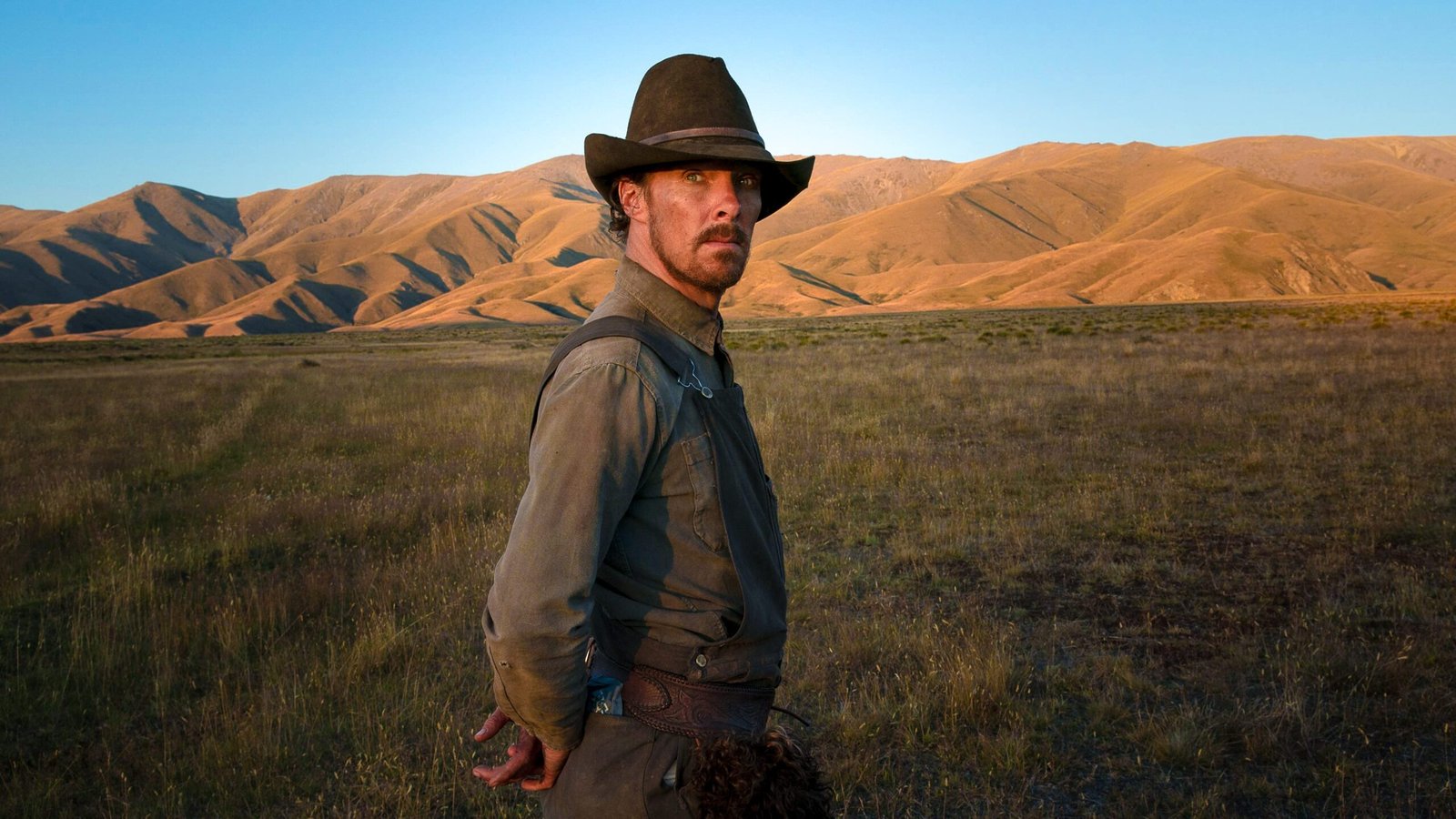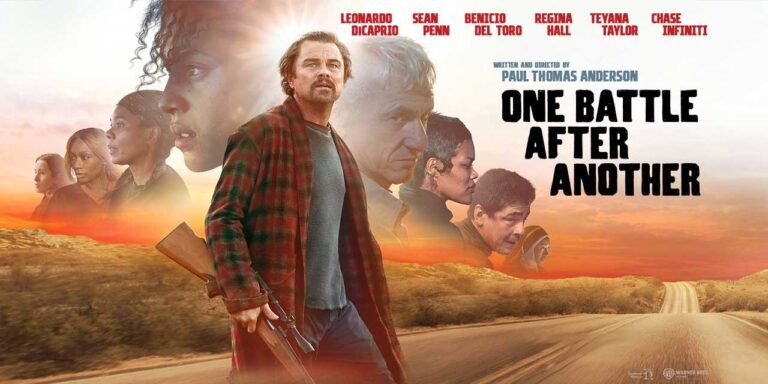
The highly anticipated film “The Power of the Dog” has arrived on Netflix, and it’s already generating a lot of buzz as a potential frontrunner for the 2022 Academy Awards. Directed by the acclaimed Jane Campion and starring a powerhouse cast led by Benedict Cumberbatch, this psychological Western drama is a cinematic masterpiece that delves deep into the complexities of human nature, family dynamics, and the consequences of our actions.
Based on the novel of the same name by Thomas Savage, “The Power of the Dog” is set in 1920s Montana and follows the story of the Burbank brothers, Phil and George, whose lives are upended by the arrival of George’s new wife, Rose, and her son, Peter. As the brothers’ relationship becomes increasingly strained, the film explores themes of masculinity, homophobia, and the ways in which trauma can shape an individual’s behavior and relationships.
In this in-depth blog post, we’ll dive into the key themes, characters, and cinematic elements that make “The Power of the Dog” such a compelling and thought-provoking film. We’ll also explore the critical reception and awards buzz surrounding the movie, as well as its potential impact on the 2022 Oscar race. So, let’s delve into the power of “The Power of the Dog”!
Themes and Symbolism
One of the standout aspects of “The Power of the Dog” is its rich thematic tapestry, which explores a range of complex and interconnected ideas. At the heart of the film is the exploration of masculinity and the ways in which societal expectations and norms can shape an individual’s behavior and self-perception.
The character of Phil Burbank, played with a chilling intensity by Benedict Cumberbatch, embodies the rugged, hyper-masculine archetype of the American West. He is a skilled rancher and horseman, and his mastery of these traditionally “masculine” skills is a source of pride and power. However, Phil’s aggressive and domineering behavior towards his brother George (Jesse Plemons) and his new wife, Rose (Kirsten Dunst), suggests a deeper insecurity and a desire to assert his dominance.
The film also delves into the theme of homophobia and the ways in which it can shape an individual’s identity and relationships. Phil’s disdain for Rose and her son, Peter (Kodi Smit-McPhee), is rooted in his perception of them as weak and effeminate, and his attempts to undermine and humiliate them are a reflection of his own internalized homophobia.
The film’s exploration of masculinity and homophobia is further enhanced by its use of symbolism and visual metaphors.
The vast, rugged landscape of Montana serves as a backdrop for the characters’ emotional and psychological journeys, with the harsh, unforgiving environment mirroring the characters’ own internal struggles.
The presence of the titular “power of the dog” – a metaphor for the primal, animalistic nature of human behavior – is a constant undercurrent throughout the film, and its manifestation in the form of Phil’s cruelty and manipulation is a chilling reminder of the darker aspects of the human psyche.
Another key theme in “The Power of the Dog” is the impact of trauma and its ability to shape an individual’s behavior and relationships. The film delves into the characters’ pasts, revealing the ways in which their experiences have informed their present-day actions and choices. This is particularly evident in the character of Rose, whose fragility and vulnerability are a direct result of the trauma she has endured in her life.
The film’s exploration of these themes is further enhanced by its stunning visual style, with Campion’s masterful direction and the cinematography of Ari Wegner creating a sense of unease and tension that permeates every frame. The use of close-ups, long takes, and carefully composed shots heighten the emotional intensity of the film, drawing the audience deeper into the characters’ inner worlds.
Character Analysis
At the heart of “The Power of the Dog” are the complex and richly drawn characters, each of whom brings their own unique perspective and emotional journey to the story.
Phil Burbank
As the film’s central antagonist, Phil Burbank is a fascinating and deeply unsettling character. Played with remarkable intensity by Benedict Cumberbatch, Phil is a skilled rancher and horseman who takes pride in his rugged masculinity and his ability to dominate those around him.
Phil’s relationship with his brother, George, is particularly complex, with the two men engaging in a constant power struggle that is rooted in their childhood experiences and their differing approaches to life. Phil’s disdain for George’s more refined and genteel sensibilities is a reflection of his own insecurities and his desire to assert his dominance.
As the film progresses, the audience is given glimpses into Phil’s past, which reveal the trauma and emotional wounds that have shaped his behavior. His cruelty towards Rose and Peter is a manifestation of his own internalized homophobia and his fear of vulnerability, and his ultimate downfall is a result of his inability to confront and come to terms with his own demons.
Rose
Played with heartbreaking vulnerability by Kirsten Dunst, Rose is a complex and multifaceted character who serves as a foil to Phil’s aggressive masculinity. A widow who has recently married George, Rose is initially portrayed as a fragile and delicate woman who is ill-equipped to navigate the harsh realities of life on the ranch.
However, as the film progresses, the audience is given a deeper understanding of Rose’s inner life and the trauma that she has endured. Her struggles with alcoholism and her growing sense of isolation and despair are a reflection of the emotional wounds that she has carried with her for years, and her interactions with Phil and Peter serve as a catalyst for her own personal growth and transformation.
Rose’s character arc is a poignant exploration of the ways in which trauma can shape an individual’s behavior and relationships, and Dunst’s nuanced performance is a highlight of the film.
Peter
Played with remarkable subtlety by Kodi Smit-McPhee, Peter is the film’s most enigmatic and intriguing character. As the son of Rose and the stepson of George, Peter is initially portrayed as a shy and awkward young man who is ill-suited to the rugged demands of ranch life.
However, as the film progresses, it becomes clear that Peter is a far more complex and calculating individual than he first appears. His interactions with Phil, in particular, are a source of tension and intrigue, as the audience is left to wonder about the true nature of his relationship with the older man.
Peter’s character arc is a fascinating exploration of the ways in which individuals can use their perceived weaknesses as a means of gaining power and control. His ability to manipulate those around him, particularly Phil, is a testament to his intelligence and resilience, and his ultimate triumph over the film’s antagonist is a satisfying and thought-provoking conclusion to the story.
Cinematic Achievements
In addition to its rich thematic content and complex character development, “The Power of the Dog” is also a stunning cinematic achievement, with Jane Campion’s masterful direction and the film’s technical elements working in perfect harmony to create a truly immersive and unforgettable viewing experience.
Cinematography and Visual Style
One of the standout elements of “The Power of the Dog” is its stunning cinematography, which was helmed by Ari Wegner. The film’s visual style is characterized by a muted, earthy color palette and a sense of stark, rugged beauty that perfectly captures the harsh, unforgiving landscape of 1920s Montana.
Wegner’s use of long takes, carefully composed shots, and a focus on the characters’ faces and body language creates a sense of intimacy and emotional intensity that draws the audience deeper into the story. The film’s use of close-ups, in particular, is a powerful tool that allows the audience to see the subtle shifts in the characters’ expressions and emotions, heightening the overall impact of the narrative.
The film’s visual style is further enhanced by its attention to detail, with the production design and costume work creating a fully realized and immersive world that feels both historically authentic and emotionally resonant.
Musical Score and Sound Design
The musical score for “The Power of the Dog” was composed by Jonny Greenwood, the acclaimed musician and composer best known for his work with the band Radiohead. Greenwood’s score is a haunting and atmospheric blend of strings, piano, and electronic elements that perfectly complements the film’s brooding and unsettling tone.
The score’s use of dissonance and tension-building techniques creates a sense of unease and foreboding that heightens the emotional impact of the film’s key moments. The way in which the music interacts with the film’s sound design, which includes the ambient sounds of the ranch and the characters’ footsteps, further enhances the overall cinematic experience.
The attention to detail in the film’s sound design is also noteworthy, with the subtle use of sound effects and the careful placement of dialogue creating a sense of immersion and realism that draws the audience deeper into the story.
Critical Reception and Awards Buzz
Since its premiere at the 78th Venice International Film Festival, “The Power of the Dog” has been met with widespread critical acclaim, with many hailing it as one of the best films of the year.
The film has received numerous accolades, including the Silver Lion for Best Direction for Jane Campion at the Venice Film Festival, and it has been nominated for several major awards, including the Golden Globe for Best Motion Picture – Drama and the BAFTA for Best Film.
In addition to the film’s overall success, the performances of the cast have also been widely praised, with Benedict Cumberbatch, Kirsten Dunst, and Kodi Smit-McPhee all receiving significant awards buzz for their respective roles.
Cumberbatch’s portrayal of the complex and deeply unsettling Phil Burbank has been particularly acclaimed, with many critics highlighting his ability to capture the character’s nuanced blend of aggression, vulnerability, and emotional repression.
Dunst’s performance as the fragile and emotionally scarred Rose has also been widely praised, with many critics noting the actress’s ability to convey the character’s inner turmoil and resilience.
Smit-McPhee’s turn as the enigmatic and calculating Peter has also been singled out for its subtlety and complexity, with the young actor’s ability to convey the character’s intelligence and emotional depth earning him significant critical acclaim.
With its impressive critical reception and strong awards buzz, “The Power of the Dog” is poised to be a major contender in the 2022 Oscar race, with the film’s director, cast, and technical elements all generating significant attention and acclaim.
Conclusion
In conclusion, “The Power of the Dog” is a cinematic masterpiece that delves deep into the complexities of human nature, family dynamics, and the consequences of our actions. Directed by the acclaimed Jane Campion and featuring a powerhouse cast led by Benedict Cumberbatch, the film is a stunning exploration of themes such as masculinity, homophobia, and the impact of trauma.
Through its rich thematic content, complex character development, and stunning visual style, “The Power of the Dog” has captivated audiences and critics alike, and it is poised to be a major contender in the 2022 Oscar race. Whether you’re a fan of psychological dramas, Westerns, or simply great filmmaking, this is a movie that is not to be missed.
So, if you haven’t already, be sure to check out “The Power of the Dog” on Netflix and experience the power of this cinematic masterpiece for yourself. And don’t forget to check out the links to learn more about the film and the author’s other work!
Happy viewing!
Relevant Links
Check out the author’s YouTube channel and consider becoming a member
Read the book that inspired the film, The Power of the Dog by Thomas Savage.



